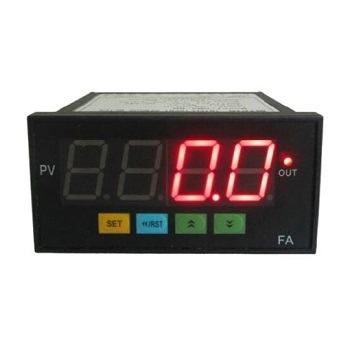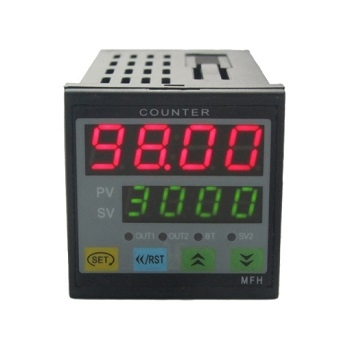A digital counter, often referred to simply as a "counter," is an electronic device used to count, display, and often control the number of events or objects as they occur. Counters are commonly used in various applications where it is necessary to keep track of quantities, frequencies, or occurrences. Digital counters are particularly useful because they provide accurate and easily readable numerical representations of the count.
Working Principle
A counter typically consists of three parts: a presetter, a counter, and an output register. Among these, the presetter is used to set the initial value of the counter, the counter is used for counting, and it updates the value in the counter based on the signals from the presetter and the timing pulse. Finally, the output register is used to output the value of the counter.
Key Features and Characteristics
- Digital Display: Digital counters use numerical displays (typically in decimal or binary format) to indicate the count value. The display may be in the form of LED (Light Emitting Diode) or LCD (Liquid Crystal Display) segments.
- Counting Input: Counters accept input signals or pulses, which are often generated by sensors, switches, or other devices. Each input pulse typically corresponds to one count increment.
- Counting Modes: Digital counters can operate in various counting modes, such as up-counting, down-counting, or bidirectional counting. Some counters allow programmable counting modes.
- Reset Function: Counters often have a reset function to set the count back to zero. This is useful for initiating a new counting cycle.
- Presets: Some digital counters allow you to set a preset value. When the count reaches this preset value, the counter can trigger alarms or control external devices.
- Memory: Some counters have memory to store and recall count values, which can be useful in applications requiring data retention.
- Decoding: Counters may have BCD (Binary Coded Decimal) or other decoding options to display counts in specific formats.

Wide Range of Applications
- Industrial Automation: Counting products on assembly lines, monitoring machine cycles, and tracking production output.
- Electronics and Electrical Circuits: Counting pulses, measuring frequency, and monitoring trigger events.
- Traffic Control: Counting vehicles on roads and highways to manage traffic flow.
- Laboratory and Scientific Research: Counting particles, events, or occurrences in various experiments.
- Timers: Keeping time in appliances, ovens, and other time-sensitive applications.
- Security and Access Control: Counting and verifying entries or exits in security systems.
General Guidelines for Using a Digital Counter
Power On and Initialization
- Connect the digital counter to a suitable power source following the manufacturer's specifications.
- Ensure that the counter's power is on, and the display is illuminated.
Input Signal Connection
- Connect the input signal source (e.g., a sensor, switch, or external device) to the counter's input terminals. This source will generate the pulses to be counted.
- Ensure that the signal source is functioning correctly and is compatible with the counter's input requirements (voltage levels, signal type, etc.).
Set Counting Mode
- Determine the counting mode you require. Most digital counters offer modes like up-counting (counting upward from zero), down-counting (counting downward to zero), or bidirectional counting.
- Configure the counter to the desired counting mode using the counter's control settings or programming features.
Reset (Optional)
- If you want to clear the count and start fresh, use the reset function provided by the counter. This will set the count back to zero.
Monitoring and Reading the Display
- Monitor the digital display to view the current count as the input signal generates pulses.
- Ensure that you understand the counting unit and format displayed on the counter (e.g., decimal or binary).

Record and Utilize the Count
- Depending on your application, you may need to record or utilize the count data. This could involve further processing, controlling external devices, or using the count for monitoring purposes.
Maintenance
- Periodically inspect the digital counter for any physical damage or signs of wear.
- Ensure that the connections are secure, and the input signal source is functioning properly.
Troubleshooting
- If you encounter issues with the counter's performance, refer to the user manual or manufacturer's documentation for troubleshooting guidance.
- Contact the manufacturer's technical support if problems persist.
Power Off
- When you've finished using the counter, turn off the power source or disconnect the counter from the power supply.
Digital counters offer advantages over their mechanical counterparts (such as mechanical tally counters or manual clickers) due to their precision, automation capabilities, and ability to interface with other digital systems. They are available in a wide range of configurations and can be tailored to specific counting requirements in different fields and industries. sisco.com offers high-quality digital counters, click to shop if you are interested.

